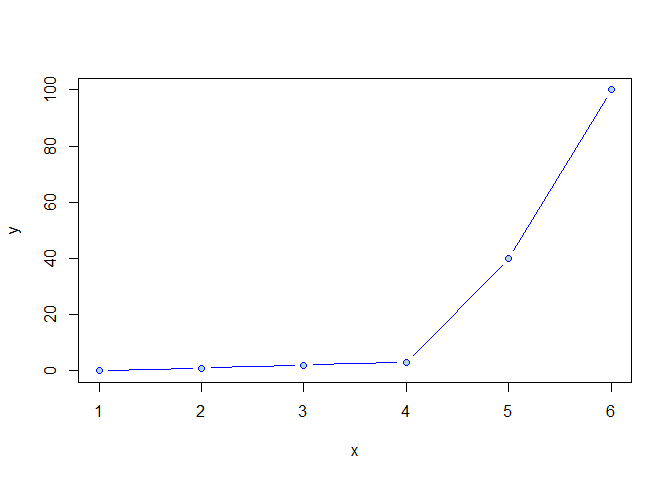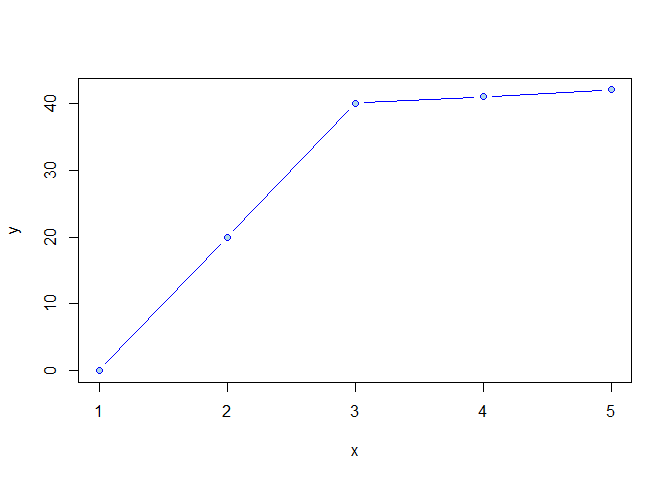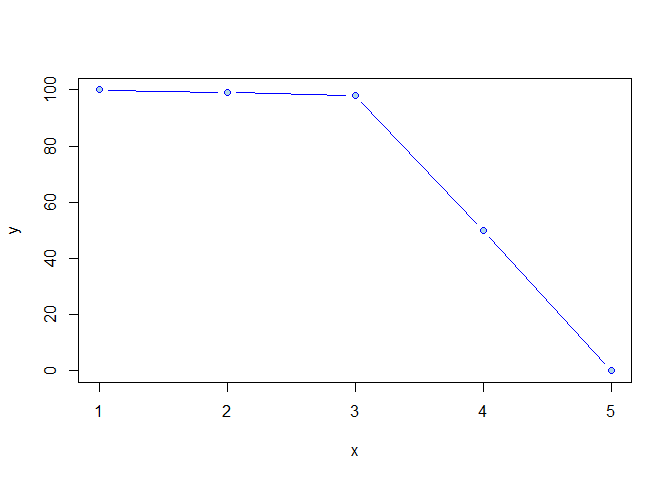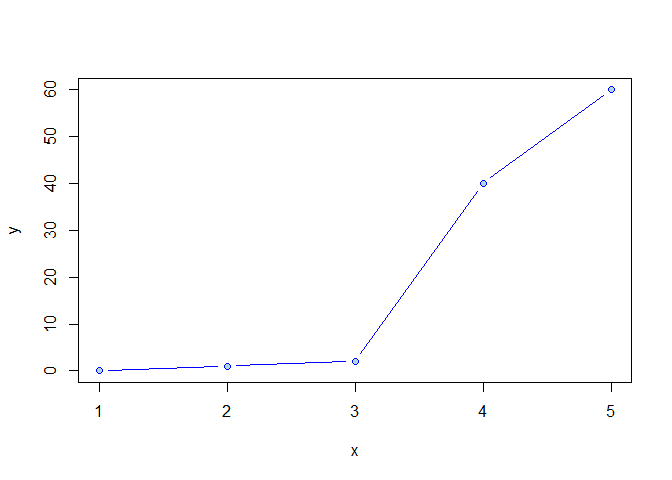The goal of kneedle is to provide an easy to use implementation of the kneedle algorithm developed at https://raghavan.usc.edu/papers/kneedle-simplex11.pdf. Rather than following an object oriented implementation (KneeLocator in Python and Kneer) of the algorithm, this takes a more functional approach which is easier to understand for beginners and is consistent with the R programming paradigm. The main goal is to detect a knee when two sets of points are plotted again each other and can be closely modeled by exponential decay/growth or logarithmic decay/growth.
Please report bugs to Emmet Tam, at emmet_tam@yahoo.com or at https://github.com/etam4260/kneedle/issues.
You can install the development version from GitHub with:
install.packages("devtools")
devtools::install_github("etam4260/kneedle")This is a basic example:
library(kneedle)
#> Registered S3 method overwritten by 'quantmod':
#> method from
#> as.zoo.data.frame zoo
# The base function 'guesses' whether the data is increasing or decreasing.
# (Will assume if the derivative of the first and last point is positive or negative:
# positive is increasing and negative decreasing)
# It also guesses the 'concavity' of the data. (Will use second derivative calculations
# using all the points and then taking the mean of those values: if the mean is >= 0, then
# it is concave; if mean is < 0, then is convex)
# If no sensitivity value provided, it will default to a sensitivity of 1.
# First and second inputs must be vectors of integers or doubles.
knee <- kneedle(c(1,2,3,4,5,6), c(0,1,2,3,40,100))
print(knee)
#> [1] 4 3
plot(c(1,2,3,4,5,6), c(0,1,2,3,40,100), xlab = "x", ylab = "y", pch=21, col="blue", bg="lightblue", type = "b")This describes a few of the parameters that can be changed.
library(kneedle)
# Concavity parameter can be changed if the graph is convex. Furthermore, you
# specify if the y is increasing or decreasing as x increases. However, the
# algorithm has 'autodetection' for those values.
knee <- kneedle(c(1,2,3,4,5), c(0,20,40,41,42), concave = FALSE, decreasing = FALSE)
print(knee)
#> [1] 3 40
plot(c(1,2,3,4,5), c(0,20,40,41,42), xlab = "x", ylab = "y", pch=21, col="blue", bg="lightblue", type = "b")knee <- kneedle(c(1,2,3,4,5), c(100,99,98,50,0), concave = FALSE, decreasing = TRUE)
print(knee)
#> [1] 3 98
plot(c(1,2,3,4,5), c(100,99,98,50,0), xlab = "x", ylab = "y", pch=21, col="blue", bg="lightblue", type = "b")This describes how the sensitivity parameter affects the output.
library(kneedle)
# Sensitivity defaults to 1 as per the referenced paper. However, you can adjust
# it. A higher sensitivity make the rules more 'stringent' in classifying a
# 'candidate knee' point as a knee.
knee <- kneedle(c(1,2,3,4,5), c(0,1,2,40,60), sensitivity = 1)
print(knee)
#> [1] 3 2
plot(c(1,2,3,4,5), c(0,1,2,40,60), xlab = "x", ylab = "y", pch=21, col="blue", bg="lightblue", type = "b")
# In this case with sensitivity = 2, we see that that (3,2) is no longer considered a knee point.
# No other knees were detected.
knee <- kneedle(c(1,2,3,4,5), c(0,1,2,40,60), sensitivity = 2)
print(knee)
#> numeric(0)
plot(c(1,2,3,4,5), c(0,1,2,40,60), xlab = "x", ylab = "y", pch=21, col="blue", bg="lightblue", type = "b")


